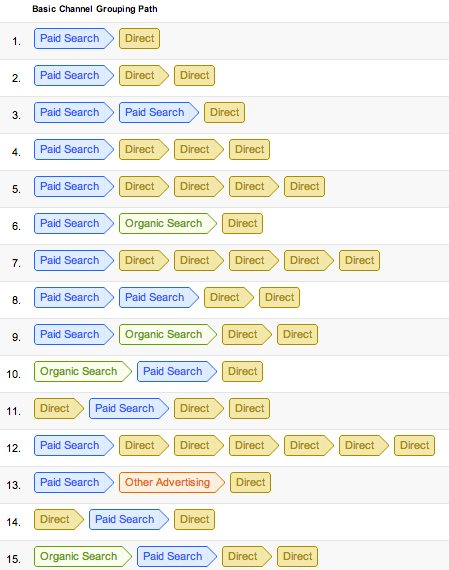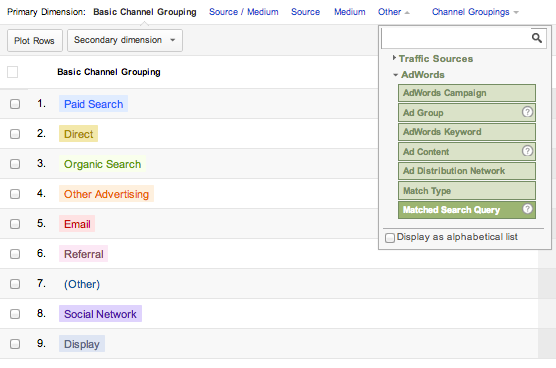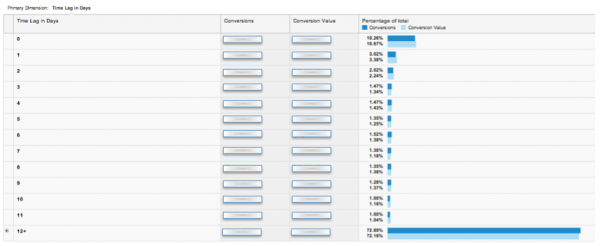Keys To Projecting Latent Value In Visitors
One of the most difficult and valuable exercises in quarterly planning is forecasting. Many companies require budgets to be set well in advance, and as a result, analysts often prepare conservative projections in order to remain cautious and not setup their marketing colleagues to under-deliver. The byproduct of conservative projections is more difficult forecasting mid […]
One of the most difficult and valuable exercises in quarterly planning is forecasting. Many companies require budgets to be set well in advance, and as a result, analysts often prepare conservative projections in order to remain cautious and not setup their marketing colleagues to under-deliver.
The byproduct of conservative projections is more difficult forecasting mid quarter as it becomes apparent that not all referring traffic sources are equal in traffic and value.
The inevitable question comes up: how much more revenue can be delivered from channel X with additional budget?
To accurately answer this question requires several channel specific insights including:
- The relationship between visitors and cost-per-visitor
- Incremental visitor opportunity
- Conversion rates
- Average order values
- Latency in conversion
Forecasting With Google Analytics
Analysis requires multiple regression models to understand marginal cost and revenue for each channel. But before you get neck deep in spreadsheets, I want to highlight a few tools at your disposal, which can guide you in the direction of specific channels and subsets of those channels to pursue for the lowest hanging fruit.
Google Analytics has a fantastic tool set called Multi Channel Funnels. The purpose of the tool is to showcase the overlap of channels leading to conversions through data tables and visualizations:
By default, Multi Channel Funnels break traffic sources into basic channel groupings, as well as the more standard Source/Medium groupings, and identify where cross-channel interactions occur including the following analyses:
- Assist conversions – interactions which lead to additional interactions which convert
- First interactions – attribution to the channel driving the first interaction prior to a conversion
- Interaction paths – cross channel paths by which users reach a site repeatedly prior to converting
- Path Length – the number of interactions prior to conversion
- Time Lag – the time line from first interaction until conversion
A quick look at a top conversion paths analysis will immediately highlight opportunities for incremental volume:
Numbers 8 and 10 showcase immediate opportunities – paid search and ‘other advertising’ lead to latent direct conversions. This means that pushing on paid ads in the short term will lead to direct conversions in the longer term.
In aggregate, the data is insightful, highlighting how people are getting to your site over time. However, the Conversion Segments feature takes basic Multi Channel Funnels from presentation material to action ready.
By creating a custom conversion segment, Paid Search to Direct, we can get a clear picture as to how many different ways users interact with Paid Search and then additional channels prior to purchasing, as well as the exact percentage of conversions and revenue associated with this path (I am not displaying conversion count and revenue, but they are available).
Switching gears over to the assisted conversions report (keeping the conversion segment Paid to Direct applied) we can switch the primary dimension over to use AdWords Matched Search Query to identify paid search keywords driving clicks which turn into conversions via direct.
Finally, moving to the time lag analysis, we can understand how long it will take for incremental paid search clicks to deliver results via direct clicks:
Taking a step back, this series of analyses reveal:
- The exact set of keywords to push on in paid search to yield conversions via a direct last interaction
- How long it’s going to take to observe those conversions
Armed with what keywords to analyze, go back to and execute the aforementioned regression analysis to understand the projected cost of the incremental paid search clicks. Merge it with the time lag analysis to showcase the expected time frame for incremental conversions. Now, that’s an accurate forecast.
Contributing authors are invited to create content for Search Engine Land and are chosen for their expertise and contribution to the search community. Our contributors work under the oversight of the editorial staff and contributions are checked for quality and relevance to our readers. The opinions they express are their own.
Related stories
New on Search Engine Land





